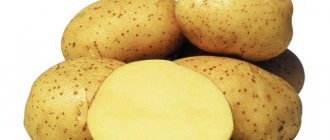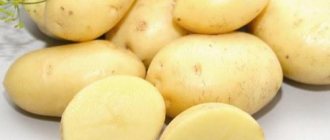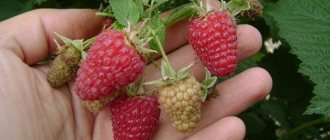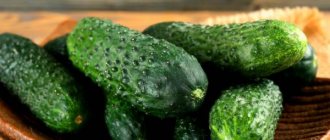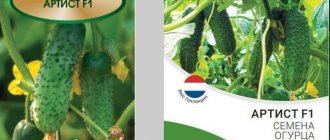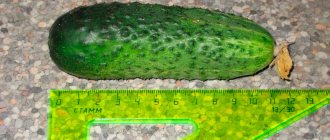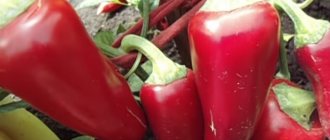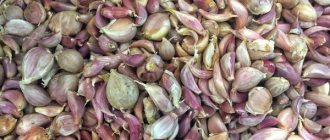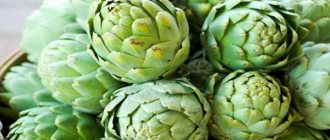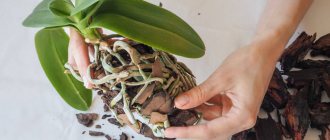Cucumber Sheer perfection: description of the variety
Gherkin hybrid cucumber Perfection itself belongs to the parthenocarpic species,
Only female flowers are formed on the vines; the plant does not require pollination by bees, therefore it is ideal for growing in greenhouses and film greenhouses.
The bushes are of medium height, well leafed, shoots can reach a height of 1.8-2.0 m. The foliage is large, 3-5 lobed, slightly wrinkled, soft emerald in color.
Up to 6 ovaries are formed in each sinus, so the hybrid is highly productive.
Photo of cucumber Perfection itself
It is best to form the lashes of this bunched hybrid, leaving only the central stem
. It is better to remove all side shoots that form in large numbers immediately, then the remaining stem gets a sufficient amount of light, and the ripening gherkins get a sufficient amount of nutrition.
To do this, all the stepsons and flowers in the lower 4 nodes of the central stem are removed from the central shoot. In all subsequent nodes, the resulting stepsons are removed, leaving only flowers. As a result, only leaves and bunches of gherkins remain on the central lash.
Ripe gherkins - regular cylindrical shape, up to 10 cm long
. The skin is of medium density, with an average number of small tubercles and light spines, the color is light emerald along the entire length of the green, and at the base it is darker, with light longitudinal stripes. The thorns are soft and practically do not prick.
CUCUMBERS!
Cucumber Millionaire F1 Cucumber Gosha F1
Cucumber pulp Perfection itself - slightly compacted, with a pleasant delicate taste, there is no bitterness in it at the genetic level.
The harvested crop can be transported to any distance; gherkins are stored for a long time in appropriate conditions.
Basic ideas about the variety
A detailed description provides a lot of useful information to those who first decided to grow a crop on their own site. In particular, it will help to correctly position the plant on the site, applying the requirements of agricultural technology to obtain the declared yield.
Plant:
- Belongs to the type of bunched plants.
- Parthenocarpic subspecies.
- Female flowers predominate.
- Medium branched.
- There are 5–6 ovaries in one sinus.
- Ripens in: 40–45 days.
- Fruits for a long time.
- Productivity: 10 kg per plant.
Cucumbers:
- Shape: cylindrical.
- Length: 10 cm.
- Green color.
- Thorns: white (non-prickly).
- Surface: lumpy.
- Taste: excellent, without bitterness.
Cucumber yield indicators Sheer perfection
If this hybrid is formed correctly, watered and fertilized on time, then the yield of this bunch variety will be high
. Subject to all the rules of agricultural technology, up to 30 kg of delicious, aromatic green cucumbers are collected from each square of area. Sheer perfection.
But ripe greens should be collected daily. And after the first harvest is harvested, the cucumber vines should be fed with fertilizer containing nitrogen to activate the growth of new ovaries.
Diseases and pests
Cucumber Perfection itself, like other hybrids, has good immunity, and therefore is resistant to most diseases. The variety is not damaged by common and downy mildew, white mosaic, and downy mildew.
For other diseases, preventive treatments should be carried out. Chemicals are used only before flowering begins.
Cucumber preparations for the winter:
Cucumbers with chili ketchup for the winter - the most delicious recipes
Pros and cons
The main advantages of the hybrid Perfection itself include:
- early ripening of greens;
- fruiting is friendly;
- good taste of ripe gherkins;
- versatility of the harvested crop;
- the taste of pickled and salted greens is excellent;
- gherkins Perfection itself tolerate transportation well and can be stored for quite a long time.
Among the disadvantages of the variety, the following should be noted:
- plants require care;
- seeds have to be purchased annually, and their cost is quite high.
INTERESTING!
Diseases of sweet bell peppers
Cucumber Sheer perfection: growing, planting and care
Growing cucumbers Perfection itself is not too troublesome, the main thing is to follow all the rules when planting and further caring for adult plants. And then you can collect a large number of gherkins from the cucumber beds every day.
In the south of the country, cucumber seeds of Perfection itself are planted directly in garden beds. You can plant the hybrid in a greenhouse or directly in open ground.
And in cooler regions, you first need to grow seedlings at home, which are then transferred either to beds in the garden or to a greenhouse.
Parthenocarpic cucumbers, HYBRIDS AND GMOs - video
Seed preparation
Since this cucumber is a parthenocarpic hybrid, seeds are not formed in the fruits or remain in an embryonic state. Therefore, seed material has to be purchased annually.
Such seed material does not require disinfection or other preparation before planting. But you still need to germinate before planting - in this case, seedlings will appear a few days earlier. The seed material is soaked in a solution of growth stimulants - Kornevin or other similar ones.
Sowing seeds for seedlings
Cucumber seeds should be planted for seedlings about a month before the intended transplantation of seedlings to a permanent place
. Soil for planting is usually purchased at gardening stores, but you can prepare it yourself. To do this, you need to mix turf and leaf soil, peat, river sand and humus. The resulting nutrient substrate is spilled with a pink solution of potassium permanganate to destroy pathogenic microorganisms and pest larvae that might be in the soil.
Since these vegetable plants have a very delicate root system, they should not be subjected to unnecessary replanting procedures, including picking. Therefore, the seed material is immediately planted in separate cups.
Seeds should be buried in the soil to a depth of 1.5 cm
. Then the soil is leveled, watered, covered with glass and placed in a warm, bright place for germination. Usually the first shoots appear 5-6 days after planting the seeds.
Super bunch cucumbers. 10-12 ovaries in a node - video
Further care of seedlings
In the future, young plants should be watered regularly; it is important that the soil is constantly moist. However, when watering, you must ensure that there is no stagnation of moisture in the soil. Otherwise, plants may be affected by blackleg.
A couple of times during the cultivation of cucumber seedlings, they are fed with organic matter or mineral fertilizers containing nitrogen.
. The first feeding is carried out at the stage of two permanent leaves, and the second - 12-14 days after the first.
Hardening of seedlings begins approximately 10 days before transplanting them to the beds. The plants are taken out into the fresh air for a short time at first, but gradually left outside for almost the entire day so that the seedlings get used to the new growing conditions.
Transplantation to a permanent place
The beds in the garden or greenhouse are prepared in advance:
you need to remove all plant debris, dig up the soil and add organic matter to it - at least 6 kg for each square of area.
In the spring, the beds are dug up and loosened again, holes are dug at a distance of 0.2 m from each other. The row spacing must be at least 0.6 m.
The Samo perfection cucumber variety grows well in open and closed ground, but in greenhouse conditions the Samo perfection hybrid is much more comfortable, and therefore the yield there is much higher.
The seedlings are transferred into the prepared holes along with a clod of earth, while the roots of the plants are practically not injured.
The holes are filled with soil from above, compacted and watered.
Recommendations for working with seedlings
Cucumbers of the “Perfection F1” variety are planted in two usual ways:
- direct sowing of seeds in the ground;
- planting seedlings.
Tip: To get a higher yield, use the seedling method.
Drop off rules:
- The seeds must first be subjected to a disinfection procedure and then soaked in solutions to enhance growth. You can prepare stimulants yourself, or purchase ready-made material.
- Planting takes place at the end of March or beginning of April - depending on the territory and region.
- To avoid stress that seedlings may experience during transplantation, cucumber seeds are placed in peat pots. Seedlings are placed in the ground directly in pots, since the latter are capable of decomposing.
- Sowing is carried out in holes 1.5-2 cm deep.
- The air temperature required for germination is 25°C.
Seedlings of cucumbers of the “Perfection Itself” variety are planted after temperatures have stabilized and only in heated soil. The cucumber sprouts should form 3-4 true leaves. In the first days, the seedlings are insulated - covered with film or agrofibre.
Advice. Seedlings must be watered after planting. First, warm water (directing the stream under the roots), and then use a solution of the “Radipharma” drug.
Further care of the cucumber Perfection itself
Their productivity directly depends on further care of cucumbers. The main thing is to observe the irrigation regime, apply fertilizing on time and correctly form the cucumber vines.
Irrigation regime
This cucumber grows well in perfection at an air temperature of about 23-26 degrees Celsius in moderately moist soil.
It is better to water in the evening with heated filtered water.
Loosening and weeding
After each watering or rain, you need to loosen the root zone of the cucumber bushes to remove the dry crust that forms. It is also necessary to constantly fight weeds, which interfere with the active growth of plants and take a large amount of nutrients from the soil.
It is also necessary to tie cucumber vines to supports or trellises
.
Feeding
For abundant fruiting during the season, it is necessary to regularly fertilize the soil. To feed cucumbers, Perfection itself usually alternates the application of organic matter and complex mineral fertilizers. They should be applied after watering so as not to burn the root system of cucumbers.
Description of the hybrid
The very perfection f1 was bred by domestic breeders. It is a parthenocarpic hybrid, meaning the plant does not require pollination to form fruit.
It is characterized by an abundance of fruits on the bushes and a rich harvest. 3-6 greens are formed in each leaf axil. The first fruits ripen within 37–30 days after germination. Cucumbers are resistant to elevated temperatures and harsh conditions and prefer abundant watering.
Distinctive features
The distinctive features of the hybrid include stable and high productivity even in unfavorable summers and uniform ripening of cucumbers.
Features include a shallow root system of small size - for this reason the plant needs frequent and abundant watering. Another important characteristic of the hybrid is its female type of flowering in most ovaries.
Composition, properties, benefits, calorie content
Cucumber consists of 95% structured water that is beneficial for the body. Among vegetables, cucumber takes one of the first places in terms of fiber volume. The dietary fiber it contains helps to gently cleanse the intestines and improve their motility.
Cucumber also contains many health benefits:
- beta-carotene;
- vitamins A, B1, B2, C, PP;
- potassium;
- magnesium;
- zinc;
- copper;
- manganese;
- iron;
- chlorine;
- iodine;
- chromium;
- phosphorus;
- sodium;
- folic acid.
The calorie content of cucumber is only 15 kcal per 100 g.

